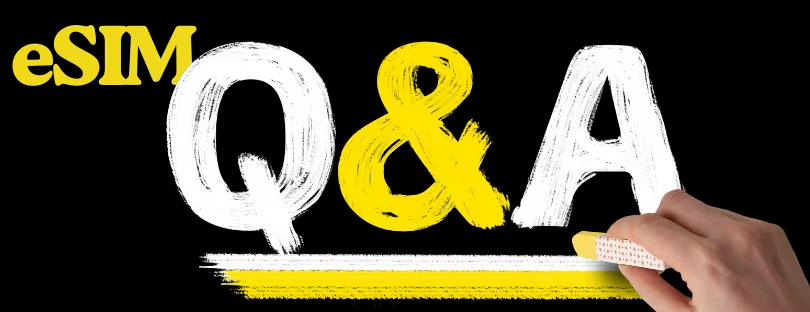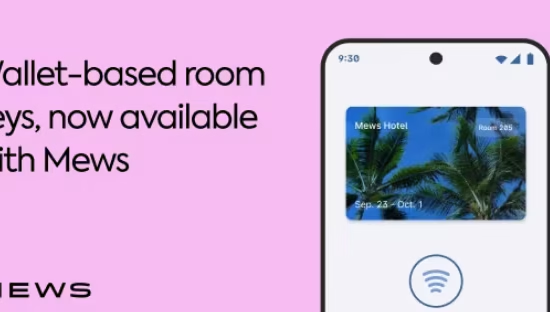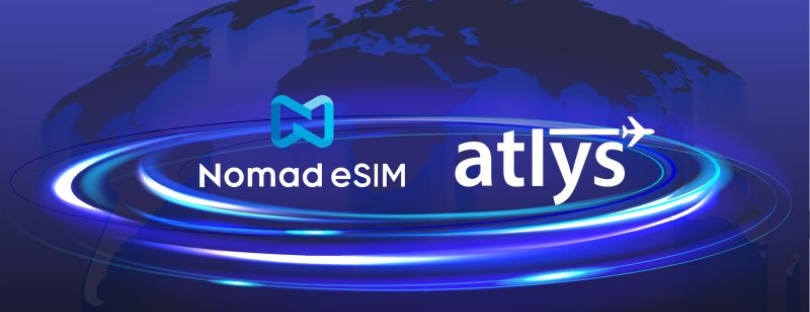
eSIM Q&A: What They Are, How They Work, and Why You Might Want One
Today, I’m doing something a little different—and honestly, long overdue. We’re going full-on Q&A mode! If you’ve ever stared at your phone wondering, “Wait, what even is an eSIM and why does everyone keep talking about it?”—you’re not alone.
And here’s the thing: eSIM is only getting bigger. According to a report from Juniper Research, the number of smartphones using eSIMs is expected to reach 1.2 billion by 2025—a huge jump from just over 400 million in 2023.
From iPhones to wearables, tablets, and even laptops, eSIM tech is creeping into more and more of the devices we use every day. Airlines are adopting it. Mobile carriers are expanding support. And travelers are slowly realizing just how convenient it really is.
But here’s the catch: one of the most obvious things missing from this entire shift is awareness. A lot of people still don’t know what an eSIM is, how it works, or how to get started. And that’s what this post is here to fix—simple, jargon-free answers to the most common (and often overlooked) questions.
I’ve rounded up the most common (and quirky) questions people have asked me lately about eSIMs, whether over coffee, on Twitter (it will always be TW!), or in random DMs from fellow travelers and techies. Think of this post as your go-to eSIM cheat sheet, minus the jargon and with a whole lot of straight talk.
Let’s dive in!
1. First things first—what exactly is an eSIM?
So, eSIM stands for embedded SIM. Unlike the plastic SIM card you pop in and out of your phone, an eSIM is built right into your device. No physical swapping. It’s all digital.
Instead of buying local SIM cards in every country, your phone stores the plan virtually. You scan a QR code or use an app—and boom, you’re online.
2. Is it better than a physical SIM?
Most of the time, yes. Especially if you travel frequently.
- You can activate it instantly from anywhere
- You don’t have to mess with tiny SIM tools
- You can store multiple eSIM profiles for different countries or use cases
Still, physical SIMs might be useful in certain places where eSIM support is limited.
3. How do I know if my phone supports eSIMs?
Most modern phones do. If you’re using an iPhone XR or later, a Pixel 3+, or a Samsung Galaxy S20+, chances are you’re covered. Some Xiaomi, Motorola, Oppo, and Huawei models also support it—just be sure to check the exact model and region.
To double-check: go to Settings > Mobile Network and look for an option that says “Add eSIM” or “Add mobile plan.”
4. Is it safe? Like… can someone steal my info if it’s digital?
eSIMs are actually safer than physical SIMs. They’re harder to clone or tamper with, and if your phone gets lost or stolen, you can usually deactivate the eSIM remotely.
Just treat your QR codes and activation links like you would a password—don’t post them online or share them casually.
5. What happens if I lose my phone with an eSIM?
Good news: without physical access to the phone, your eSIM is useless to others. And most providers let you deactivate or transfer the plan from your account dashboard.
Still, it’s smart to use tools like Find My iPhone or Find My Device and lock things down quickly.
6. Can I use an eSIM and a regular SIM at the same time?
Absolutely. This is my favorite travel trick.
You can keep your regular SIM active for calls and texts (like WhatsApp or two-factor codes) and use an eSIM just for data in another country. It’s like having a local connection without giving up your main number.
7. Can I top up or recharge my eSIM plan, or do I need to buy a new one?
It depends on the provider.
Some—like Airalo, Airhub, and aloSIM—let you top up easily. Others require you to buy a new eSIM entirely, which can be annoying if your phone has limited space for storing eSIM profiles.
Always check before you buy.
8. Do eSIMs expire if I don’t use them right away?
Yes. Most have an expiration period after purchase, even if you don’t activate them. That could be 30 days, 6 months, or even a year. Once activated, the validity countdown begins—so always read the fine print and only buy when you’re ready to travel.
Pro tip: some plans activate the moment they’re installed on your phone—not when you start using data.
9. Can I use eSIMs for multiple countries or just one?
There are three types:
- Local eSIMs: Valid in one country only (usually the cheapest).
- Regional eSIMs: Cover multiple countries (e.g., all of Europe or Southeast Asia).
- Global eSIMs: Cover 80–120+ countries, but often at a higher price and sometimes with slower speeds.
Choose based on your itinerary—regional is often the sweet spot for value and coverage.
10. Will using an eSIM affect my phone’s battery life?
Not noticeably. eSIMs work just like physical SIMs in terms of how your phone connects to networks.
If you have both eSIM and physical SIM active (dual SIM mode), you might see a slight increase in battery drain, but nothing drastic.
11. Can I use an eSIM on my tablet, smartwatch, or laptop?
Yes, if the device supports it!
eSIM-enabled iPads, Samsung Galaxy Watches, and even some Windows laptops (like the Surface Pro with LTE) can use eSIMs. However, not all travel eSIM providers support these devices—so make sure you check compatibility before buying.
12. What’s the difference between eSIMs from travel providers and local carriers?
Local carriers (like Vodafone, AT&T, or Orange) offer long-term plans and may include calling/texting, but often require ID verification and setup in-store.
Travel eSIMs (like Airalo, Airhub, or Nomad) are instant, data-only, and don’t require ID. Perfect for short stays, digital nomads, or people who value convenience over local phone numbers.
13. Do I need a special app to use an eSIM?
You don’t have to, but it helps.
Most providers have apps that let you browse plans, track data, and manage top-ups. Some even install the eSIM with one click—no QR code needed.
But you can also activate eSIMs manually via Settings using the installation info they provide.
14. Can I use an eSIM for calls and texts, or just data?
Most travel eSIMs are data-only. You’ll need apps like WhatsApp, FaceTime, Telegram, or Skype for calling and messaging.
Some—like aloSIM—include a free Hushed number with certain plans, so you can make local calls without needing a physical SIM.
Airhub also stands out here—they offer dedicated eSIM voice plans, which let you make and receive calls using a real phone number in select countries. It’s a great option if you need something more traditional while still keeping everything digital.
15. How much do eSIMs cost?
Here’s a general idea:
- 1GB for 7 days: €1–€6
- 5GB for 30 days: €10–€20
- Unlimited (soft cap): €20–€50+
Prices depend on destination and provider. Local eSIMs are usually cheaper than global ones. Want to try eSIM? Here is 1GB for 80+ countries – valid 2 years. And it is FREE (just add code: ALERTIFY).
16. Can I keep my WhatsApp number with an eSIM?
Yes! Your WhatsApp is tied to your number, not the SIM.
Just don’t log out or change your number. Even if you’re using a different SIM or eSIM for data, you’ll stay connected on WhatsApp with your original number.
17. What’s the best eSIM provider?
Ahh, the million-euro question.
The truth? It depends on where you’re going, how much data you need, and how long you’re staying. There’s no one-size-fits-all. But here are some reliable names I often recommend:
- Airalo – massive coverage and solid interface
- Airhub – flexible pricing, good Europe plans
- aloSIM – smooth app, includes bonus voice numbers
- GigSky, Ubigi – also worth looking into
- Firsty, Truely, Roamless, iRoamly – perhaps less known but very reliable and innovative
- Nomad – strong global options and clean design
👉 And if you’re feeling overwhelmed by the options, I built something to help: the Best eSIM Finder.
It’s a searchable, sortable tool that compares over 100 providers by price, coverage, validity, supported countries, and features like free trial or unlimited plans. You can filter by region, data size, price range—even by perks like free phone numbers or hotspot support. Basically: if there’s a good deal out there, it’ll find it.
18. What’s the weirdest eSIM question you’ve gotten?
Someone once asked me if eSIMs work in airplane mode. 😅
Short answer: No. If you’re in airplane mode, your phone’s radios are off—so no mobile connection, SIM or not. You’ll need to turn on Wi-Fi or disable airplane mode to use your eSIM.
Who is eSIM not for?
eSIMs aren’t perfect for everyone—yet.
- People with older phones: No eSIM support = no luck
- Those needing local voice/SMS plans: Not all eSIMs support calling
- Travelers going to very remote or niche regions: Coverage may be limited
- People who aren’t comfortable with digital setup or tech: The manual install process can be a bit intimidating
If you’re in any of these groups, a traditional SIM or local prepaid plan might still be your best bet.
What could be improved?
- Better transparency: Some providers use vague “global” labels without clear lists of covered countries
- More flexible top-ups: Recharging isn’t always straightforward
- Data speed info: Few providers disclose whether you’ll get 4G, 5G, or just 3G in a given country
- Customer support: Hit or miss, especially for smaller eSIM companies
Alternatives worth considering
If eSIM isn’t quite right for you, here are some other solid options:
- Local SIM cards: Best if you’re staying in one country for a while
- International roaming bundles: If your home provider offers good travel deals
- Travel Wi-Fi hotspots: Like Skyroam or GlocalMe—great for multiple devices
- Dual SIM phones: Let you switch between physical SIMs easily if eSIM isn’t an option
Final Thoughts
eSIMs are like the travel tech upgrade you didn’t know you needed—until you use one and suddenly can’t go back. Instant setup, no roaming charges, and one less thing to lose at the bottom of your bag? Yes, please.
Got more questions? Drop them in the comments or DM me. I’ll keep this post updated as new ones come in. And if you need help choosing a plan, I’m happy to make a recommendation based on where you’re going and how you travel.
Until next time—stay connected, stay curious. ✌️
P.S. If you’re into eSIMs (or just travel tech in general), don’t miss the Alertify Weekly Newsletter – eSIM Insights. It’s your quick, no-fluff roundup of everything happening in the eSIM world—news, deals, device updates, new trends, and more.
Stay ahead, stay informed, and never miss a trick when it comes to travel connectivity.











